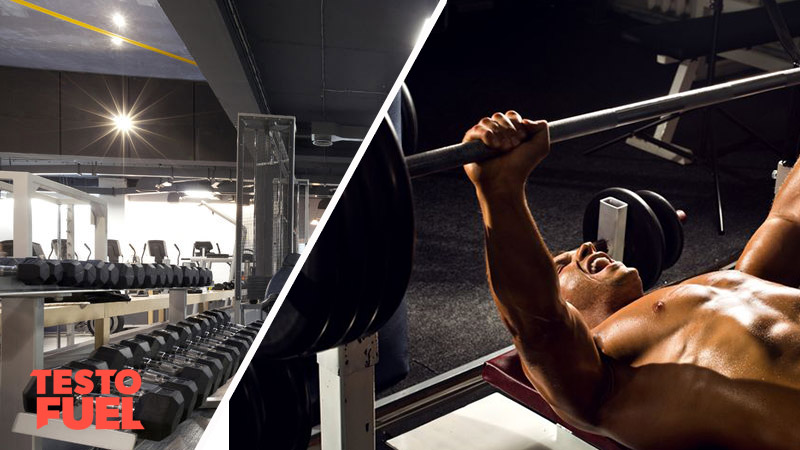TestoFuel Blog : Make Gains & Pack on the Muscle

Testosterone is the bedrock of your muscle mass, your sexuality and various other functions in the body. When working properly it can give you the following benefits:
But what is Testosterone? And why is it so good for our bodies.
In this article we answer the most popular questions about this male hormone, providing you with everything you need to know.
It’s a long one, so just in case you’re after something specific, here’s what we’ll cover:
Testosterone (T) is a steroid hormone produced by the Leydig cells of the testes in men, and the ovaries in women. It is classed as an androgen as it controls the development and maintenance of male characteristics. Other androgen hormones include dihydrotestosterone (DHT), dehydroepiandrosterone (DHEA), androstenedione, and androstenediol.
Androgens form one of five categories of steroid hormones alongside estrogens, glucocorticoids, mineralocorticoids and progestogens. Vitamin D is also closely related to these categories and could be classed as the sixth hormone system. Bile acids also have similar properties.
Our male hormone has two categories of effects:
Key Point: T is responsible for regulating muscle and bone mass, libido, energy and immune function.
As we age towards puberty we see our first significant increase in T and it is this hormone increase that begins the physical changes ultimately responsible for turning a boy into a man. In order to do this the following changes occur:
T is controlled and regulated by the hypothalamic-pituitary-gonodal (HPG) axis which is made up of the hypothalamus, the pituitary gland and the testes. Within this system are a number of regulatory hormones each with their own specific roles. Here are the main hormones you need to know about:
Key Point: All steroid hormone production begins with cholesterol, which is synthesized by the leydig cells of the testes.
A large proportion of the T in the blood circulates bound to two main proteins, albumin and sex hormone binding globulin (SHBG). Only a small amount of testosterone (around 3%) is not bound to these proteins, meaning that it is bioavailable, or ‘free’.
T can be measured from either your saliva or from your blood. If you ever have a drugs test (if you are an athlete for example) then this may be accompanied by a urine test for other androgens as well.
The free testosterone is completely available for use by your tissues and as T is only loosely bound to albumin this may also be available as well – so basically, if it isn’t bound to SHBG it is available for use by the body.
Both free and bio-available T levels provide a measure of the amount of T available to tissues and they give the same information. Free T is calculated from the testosterone and SHBG results whereas bioavailable testosterone is a separate measurement.
A lot of our free T is converted within the cells to a very potent androgen called dihydrotestosterone (DHT) – by the enzyme 5-alpha reductase. Some T is also coverted into estrogens via the aromatase enzymes.
Typically you can measure your T levels using either total (or serum) testosterone or free T. In normal adults a male will have between 300-1000 ng/dL and a female will have around 15-70 ng/dL of total T.
Key Point: For males, anything less than 300 ng/dL is called as hypogonadism – low testosterone levels.
The body works on a circadian rhythm – an inbuilt 24 hour clock based around sleep and wake cycles. Subsequently all of the hormones and receptors previously mentioned work hard to regulate T throughout the day, but allow for natural ‘pulses’ where it peaks and dips throughout a day. T levels are:
Highest between 05:30 – 08:00 hours and lowest between 18:30 – 22:00 hours
As the hypothalamic-pituitary-gonodal axis relies on so many hormones and receptors working in synergy, you’ll find that peaks in total T levels are not just due to increase release from the testes themselves, but also inhibition of other hormones and reduction in its blood flow clearance. The opposite occurs when T levels are at their lowest.
Key Point: T levels peak in the morning and are lowest in the evening.
This is covered in much more detail here, but ultimately yes T is a naturally occurring steroid.
Anabolic steroids, or Anabolic-androgenic steroids (AAS) are synthetic versions of our male hormones that match the anabolic and androgenic effects of T.
Steroids are often taken to increase size, strength and power, as well as to boost endurance and energy.
There are lots of different types of anabolic steroids available, but the main ones mirror the main hormones of the HPG axis, namely testosterone and dihydrotestosterone (DHT).
Key Point: Anabolic steroids are synthetic versions of androgen hormones such as testosterone.
Testosterone is a male hormone produced in the Leydig cells of the testes. When functioning properly it promotes development of muscle mass and strength, as well as ensuring optimal health by regulating bone health, sleep quality, sexual health, fat loss and cognitive ability.
As an androgen, steroid hormone, T is also responsible for male characteristics such as voice deepening and hair growth.
Testosterone is controlled and regulated by the hypothalamic-pituitary-gonodal axis which is made up of the hypothalamus, the pituitary gland and the testes. Within this system are a number of regulatory hormones each with their own specific roles such as follicle stimulating hormone and luteinizing hormone.
Formulated through cholesterol, T levels can be measured in a number of different ways, but more commonly using free and total values. Natural circadian rhythm mean that levels fluctuate throughout the day, however measuring free and total values of testosterone can be used to assess whether your levels are in the normal or low-high ranges.